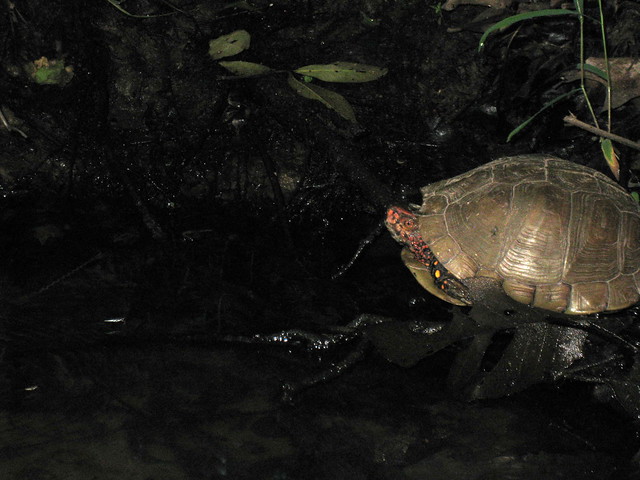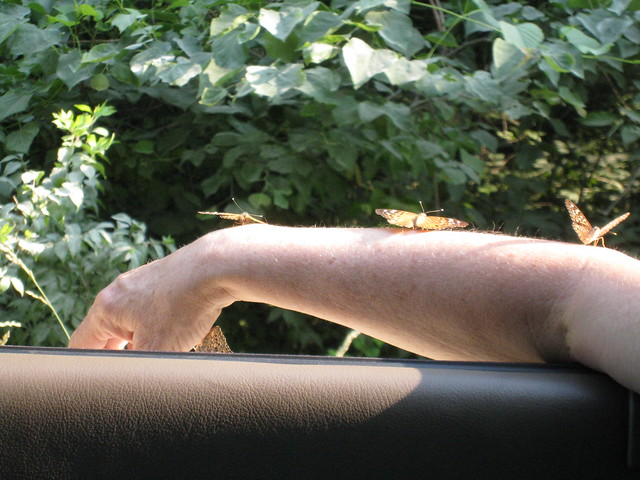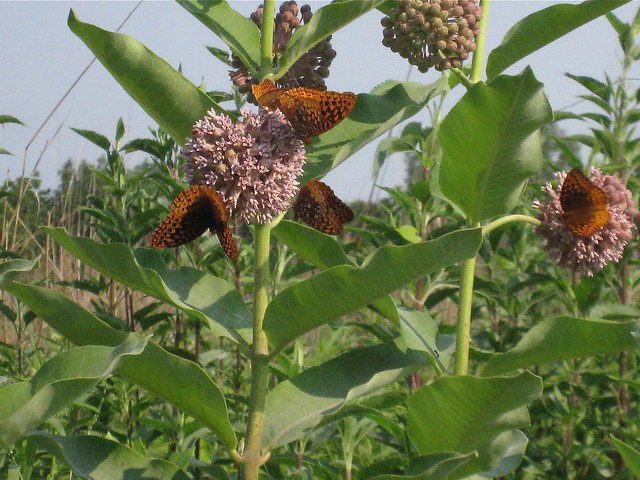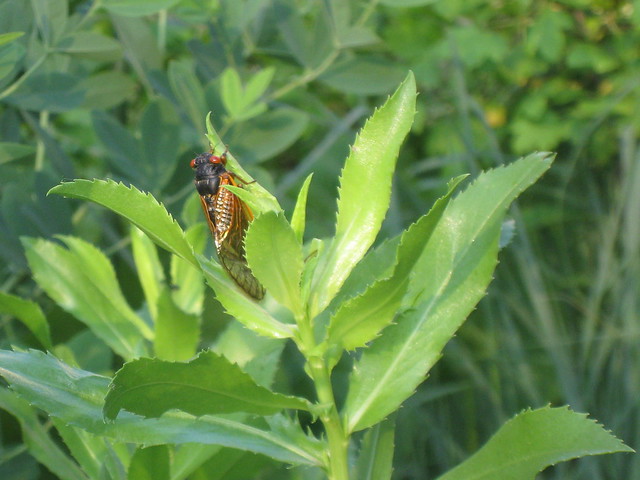Caught in the act! See the little drummer bird, just beneath the metal cap on my chimney? It is believed that woodpeckers use drumming as a substitute for song. Woodpeckers don't have a song for claiming territory or attracting a mate like a robin or cardinal would employ. They don't need one. All a woodpecker has to do if find some resonant material—a hollow snag, or your aluminum gutter—and drill, baby, drill! David Sibley's website has a great article about drumming, complete with sonagrams and recordings of Downy and the similar-looking and similar-sounding Hairy Woodpecker.
Sibley notes some intriguing findings in the research: both male and female Downy Woodpeckers drum and at all times a year. We assume the male is trying to attract a mate with his drumming/song. Is the female doing the same? And if we hear drumming in January, is that drummer defending a territory even though it's not nesting season? My grainy photo doesn't show the red nape patch, but this was a male playing his drum for me, and the neighborhood. What is he trying to say with his 15 beats per second?
When I visited southeastern Arizona in the summer of 2000, I fascinated to see that birders decorated their yards with dried agave stalks. The stalks seemed to advertise to hummingbirds that dinner time had arrived. Fiesty little Rufous and Black-chinned hummers would perch on the stalk, survey the feeders, and dive in. I was dying to carry off one of these stalks for my own yard, but alas, it would not fit into my baggage. I cast around for a substitute, and saw the potential in a year-old Compass Plant stalk.
I wrote about Compass Plant (Silphium laciniatum) last August. It's one of my favorites. This spring I tied several Compass Plant stalks to my fence. Investigating the stalk this morning, I saw not a hummingbird, but a young female Downy Woodpecker.
She drilled into the stems and pulled out something that was black. You can see tiny drill holes near the top of the right stalk. Even tinier ones are barely visible in the left stalk, just below the center of the photos. According to John Hilty's website, Illinois Wildflowers, inside the dried stem could have been the larva of the Tumbling Flower Beetle. What a great name! Check out MOBugs' post on this insect, with great photos.










